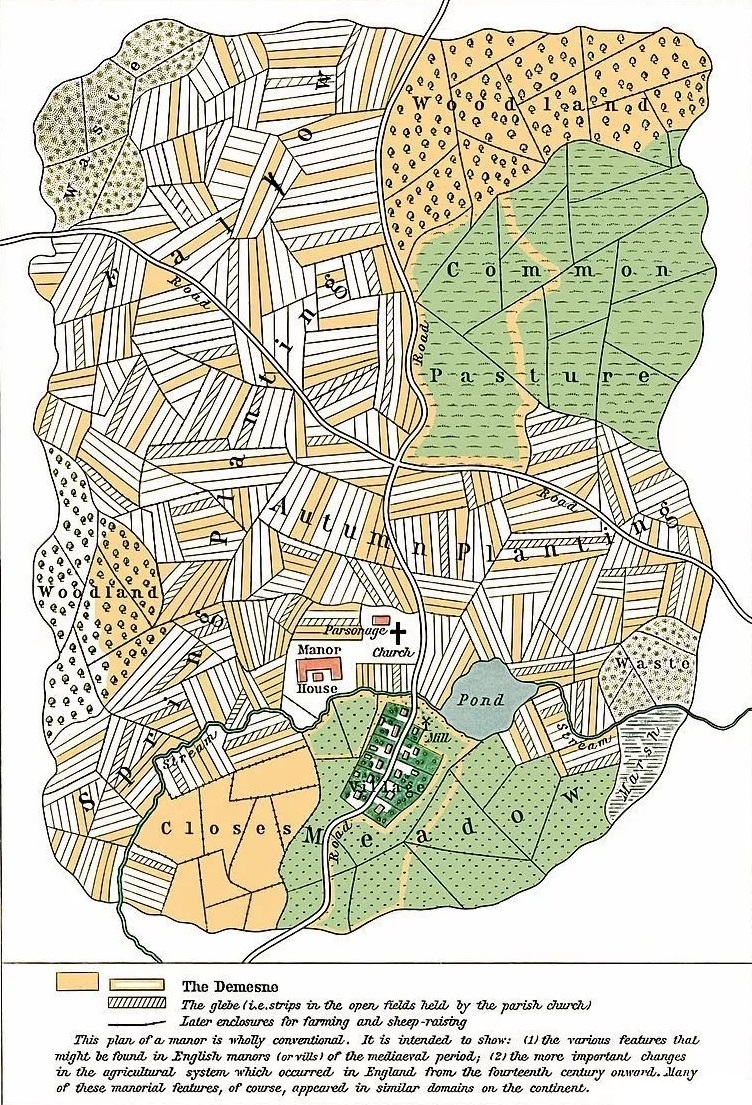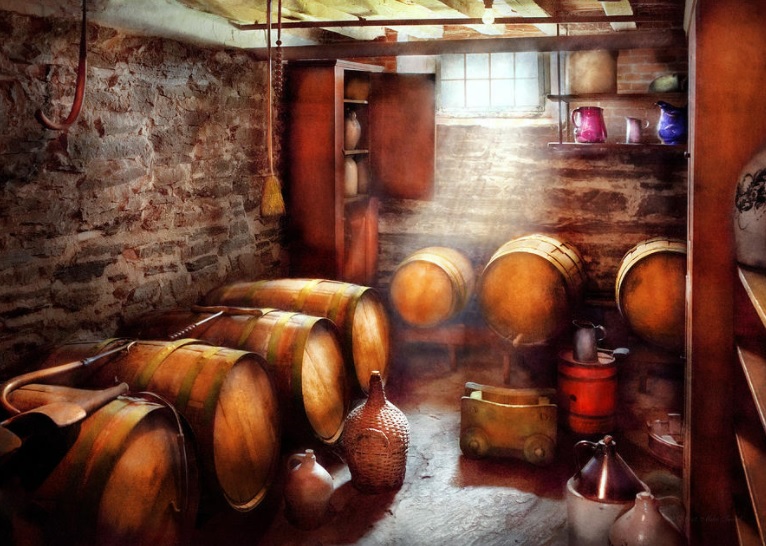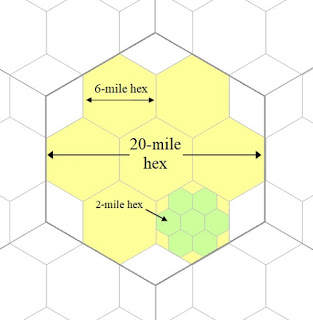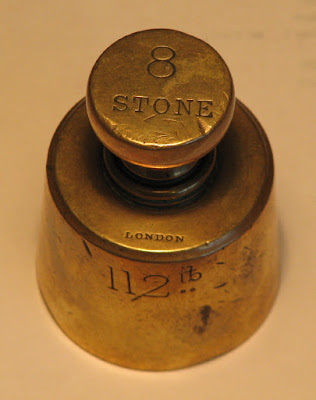Difference between revisions of "Measurements"
Tao alexis (talk | contribs) |
Tao alexis (talk | contribs) (→Land) |
||
| Line 43: | Line 43: | ||
== Land == | == Land == | ||
| − | [[File:Manor Estate.jpg|right|455px|thumb|This plan of a [[Manor Estate|manor]] | + | [[File:Manor Estate.jpg|right|455px|thumb|This plan of a [[Manor Estate|manor]] follows a conventional layout, designed to illustrate two key aspects: (1) the various structural and agricultural features typically found in medieval English manors (or "vills"), and (2) the significant changes in the agricultural system that took place in England from the fourteenth century onward. While the specific arrangement of buildings and land use may vary, many of these features were common across European manorial estates, with similar layouts and functions appearing on the continent]] |
| − | '''Acre:''' | + | '''Acre:''' refers to a plot of land measuring one [[Measurements#Chain|chain]] in width and one [[Measurements#Furlong|furlong]] in length. This specific measurement is based on practical agricultural considerations. The width of an acre corresponds to the space needed for eight furrows, while the length is determined by the distance a team of oxen can be driven before needing rest. This system maximised efficiency—oxen could be worked in a straight line for a furlong, then turned at the furthest possible point, which, while a difficult maneuver, allowed them to realign for the next furrow while simultaneously recovering strength. As a result, medieval plowed fields were laid out in long, narrow strips, avoiding excessive turns that would have exhausted the oxen and slowed the plowing process. The acre represents the amount of land that a single team of two oxen could plow in a single day, further reinforcing its role as a fundamental unit of medieval land measurement and agricultural planning. |
| − | '''Bovate:''' also called an ''oxgang'' or ''oxgait'', an area of 15 acres, the practical amount of land that a single ox can plough in one season, in time to plant crops. | + | '''Bovate:''' also called an ''oxgang'' or ''oxgait'', an area of 15 acres, the practical amount of land that a single ox can plough in one season, in time to plant crops. [[Cotter|Cotters]] and poor [[Villein|villeins]] will have one bovate to work on, which typically they don't own and cannot dispose of freely. This unit of measurement reflects the work capacity of an ox, rather than arbitrary land division, making it a functional measure in medieval agricultural economies. |
| − | '''Carucate:''' also called a ''ploughgate'', an area of 120 acres, or four virgates. | + | '''Carucate:''' also called a ''ploughgate'', an area of 120 acres, or four virgates. The carucate's acreage describes the fertile land comprised by the allotment; an actual carucate may consist of many more acres (the number varies depending on the region) of land that is impractical to plough. This allotment can be usefully equated to certain definitions of a hide. A carucate represents the amount of land that a full plough team of eight oxen could till in a single annual agricultural cycle. Its size varied based on soil quality, terrain, and local customs, and it was often used as a measure for taxation in medieval England and parts of Northern Europe. |
| − | '''Hide:''' a measure of value and [[Taxation|tax]] assessment for [[Freeholder|freeholders]] who own land. | + | '''Hide:''' a measure of value and [[Taxation|tax]] assessment for [[Freeholder|freeholders]] who own land. Formerly, this tax included rendering [[Food|food]] as tribute to members of nobility, but in the 17th century tax is usually paid in [[Coin (monetary unit)|coin]]. In times of need, a hide may yet be required to supply a combatant to the nation's [[Fyrd|fyrd]], or manpower for the army. Land taxes are typically 10-15% of the value of the land to be paid per year. A hide will consist of between 60 and 120 acres (two to four virgates), depending on the fertility of the soil, as the true measure is the production of approximately 1,620 bushels of grain yearly. The hide was historically used as the basis for assessing military and financial obligations, reflecting the amount of land sufficient to support a household and its dependents. The exact acreage assigned to a hide varied by region, with more fertile areas requiring less land to meet the expected yield. |
| − | '''Virgate:''' also a ''yardland'' or ''yard of land'', an area of 30 acres, or 2 [[Measurements#Bovate|bovates]]. | + | '''Virgate:''' also a ''yardland'' or ''yard of land'', an area of 30 acres, or 2 [[Measurements#Bovate|bovates]]. This is the practical amount of land that a pair of oxen can plough in one season, in time to plant crops. The term "yardland" is etymologically unrelated to the yard of land around a dwelling. Villeins keep tilled land equal to a virgate, which they don't own and of which they cannot freely dispose. The virgate served as a standard measure of landholding for tenant farmers in medieval England, often forming the basis of obligations in labor or rent to a manor. It was large enough to sustain a peasant household, providing enough arable land for subsistence farming while still requiring communal cooperation for ploughing and harvest. |
| − | + | === Hundred === | |
| − | The '''[[Hundred]]''' is an association of 80 to 100 hides, | + | The '''[[Hundred]]''' is an association of 80 to 100 hides, typically forming a loose geographical grouping covering between 40 and 100 square miles (including untilled land). It is theoretically capable of supplying or supporting 100 men under arms, forming a "[[Company (military unit)|company]]." Multiple companies are organized into larger political divisions called "[[Lathe|lathes]]," which in turn serve as subdivisions of "[[County|counties]]," each of unfixed size depending on historical land distribution. A full-sized manor estate consists of land equal to a hundred, though many older manors have been reduced in size over time due to the sale of land to cover rents or debts. The hundred historically functioned as an administrative and judicial unit, facilitating local governance, tax collection, and military recruitment. |
| − | + | === Knight's Fee === | |
| − | The '''[[Knight's Fee|knight's fee]]''' is an area of land consisting of 5 hides, | + | The '''[[Knight's Fee|knight's fee]]''' is an area of land consisting of 5 hides, typically made up of marginal ploughland with minimal waste, covering 600 to 640 acres, or roughly one square mile. While the landholding is contiguous, its shape is often irregular, following the contours of a strategic valley or stretching along one side of a river, particularly when positioned on the border of a county or kingdom. The knight who holds the fee is expected to reside upon the land, maintaining both his household and a military presence. In theory, a knight's fee also supports a retinue of 25 equipped soldiers, who are expected to live on the land and be available for military service when called upon. |
== Area & Length == | == Area & Length == | ||
Revision as of 22:24, 9 February 2025
Measurements are an essential aspect of representing a fully imagined game world. The units used in Alexis' World are defined and compared below to assist players in understanding the system, as it incorporates many archaic and unfamiliar measurements. These correspond to those commonly used in the 17th century, the approximate historical period reflected in the campaign. As a result, the measurements are imperial rather than metric.
Contents
Metric equivalents are not provided, as they would not exist in the minds of characters from that time. Additionally, players are encouraged to think in terms of historical measurement systems, reinforcing immersion by engaging with the world as people once did. Units are categorised according to what they measure.
The vast scale of the world is mapped using 20-mile hexes, a convenient unit for measuring steady travel by land or sea, as well as transport distances and population density. The hexagonal structure allows for efficient subdivision, with each hexagon naturally breaking into groups of seven—one central hex surrounded by six smaller one-third hexes. This system enables a structured approach to map expansion, allowing the game world to grow progressively and logically, as demonstrated in the accompanying diagram.
Mapmaking & Distances
Since each hex is subdivided into three smaller hexes in diameter and nine smaller hexes by area, the chart on the left presents a structured set of map sizes that allow for seamless scaling between different levels of detail. The listed hex dimensions serve as a shorthand for describing each map size. While a "6-mile hex map" technically consists of hexes that are 6.667 miles across, the simplified term is easier to use and more practical for gameplay than a strictly accurate measurement.
| Type | Diameter | Area | Population if density is 60 persons per acre | |||||
|---|---|---|---|---|---|---|---|---|
| miles | yards | feet | sq.miles | blocks | acres | sq.ft | ||
| 20-mile hex | 20 | 35,200 | 105,600 | 346.41 | 58,963 | 221,702 | 9,657,361,047 | 13,302,144 |
| 6-mile hex | 6.667 | 11,733 | 35,200 | 38.494 | 6,552 | 24,636 | 1,073,040,116 | 1,478,170 |
| 2-mile hex | 2.222 | 3,911 | 11,733 | 4.276 | 728 | 2,737 | 119,219,905 | 164,198 |
| land hex | 0.741 | 1,304 | 3,911 | 0.476 | 81 | 305 | 13,246,656 | 18,278 |
| hex | 0.247 | 435 | 1,304 | 0.0528 | 9 | 33.8 | 1,472,603 | 2,028 |
| block | 0.0823 | 145 | 435 | 0.00587 | 1 | 3.76 | 163,874 | 225 |
| sub-block | 0.0274 | 48.3 | 145 | 0.00065 | 0.11 | 0.416 | 18,208 | 25 |
| lot | 0.00914 | 16.1 | 48 | 0.0000723 | 0.0123 | 0.0463 | 1,995 | 2.8 |
| plot | 0.00305 | 5.4 | 16 | 0.00000806 | 0.0014 | 0.0052 | 222 | 0.31 |
| combat hex | 0.00102 | 1.8 | 5 | 9.01E-07 | 0.0002 | 0.0006 | 21.7 | 0.03 |
Six-mile hex maps are used for regional mapping, depicting provinces within a large country or representing an entire country when its total area is relatively small (less than 4,000 square miles). They serve as an effective middle scale, offering enough detail for tracking major roads, rivers, settlements, and trade routes without overwhelming the map with unnecessary minutiae. This scale is ideal for kingdom management, military movements and regional governance, allowing rulers to oversee taxation, infrastructure and the distribution of resources across provinces.
Two-mile hex maps provide a more detailed view of the local environment surrounding player lands and adventure sites. Each 2-mile hex contains approximately 30 hides, allowing for a finer representation of terrain features like forests, hills, and farmland, and give players an understanding of the proximity of settlements, roads and hazards. The inclusion of hides within each hex reinforces the relationship between land ownership, population density and agricultural capacity, offering a tangible connection between in-game economics and geography.
Additionally, the scaling between hex sizes ensures a seamless transition between macro-level worldbuilding and micro-level adventure planning, giving players and game masters a structured way to navigate between broad political strategy and localised adventuring.
Land

Acre: refers to a plot of land measuring one chain in width and one furlong in length. This specific measurement is based on practical agricultural considerations. The width of an acre corresponds to the space needed for eight furrows, while the length is determined by the distance a team of oxen can be driven before needing rest. This system maximised efficiency—oxen could be worked in a straight line for a furlong, then turned at the furthest possible point, which, while a difficult maneuver, allowed them to realign for the next furrow while simultaneously recovering strength. As a result, medieval plowed fields were laid out in long, narrow strips, avoiding excessive turns that would have exhausted the oxen and slowed the plowing process. The acre represents the amount of land that a single team of two oxen could plow in a single day, further reinforcing its role as a fundamental unit of medieval land measurement and agricultural planning.
Bovate: also called an oxgang or oxgait, an area of 15 acres, the practical amount of land that a single ox can plough in one season, in time to plant crops. Cotters and poor villeins will have one bovate to work on, which typically they don't own and cannot dispose of freely. This unit of measurement reflects the work capacity of an ox, rather than arbitrary land division, making it a functional measure in medieval agricultural economies.
Carucate: also called a ploughgate, an area of 120 acres, or four virgates. The carucate's acreage describes the fertile land comprised by the allotment; an actual carucate may consist of many more acres (the number varies depending on the region) of land that is impractical to plough. This allotment can be usefully equated to certain definitions of a hide. A carucate represents the amount of land that a full plough team of eight oxen could till in a single annual agricultural cycle. Its size varied based on soil quality, terrain, and local customs, and it was often used as a measure for taxation in medieval England and parts of Northern Europe.
Hide: a measure of value and tax assessment for freeholders who own land. Formerly, this tax included rendering food as tribute to members of nobility, but in the 17th century tax is usually paid in coin. In times of need, a hide may yet be required to supply a combatant to the nation's fyrd, or manpower for the army. Land taxes are typically 10-15% of the value of the land to be paid per year. A hide will consist of between 60 and 120 acres (two to four virgates), depending on the fertility of the soil, as the true measure is the production of approximately 1,620 bushels of grain yearly. The hide was historically used as the basis for assessing military and financial obligations, reflecting the amount of land sufficient to support a household and its dependents. The exact acreage assigned to a hide varied by region, with more fertile areas requiring less land to meet the expected yield.
Virgate: also a yardland or yard of land, an area of 30 acres, or 2 bovates. This is the practical amount of land that a pair of oxen can plough in one season, in time to plant crops. The term "yardland" is etymologically unrelated to the yard of land around a dwelling. Villeins keep tilled land equal to a virgate, which they don't own and of which they cannot freely dispose. The virgate served as a standard measure of landholding for tenant farmers in medieval England, often forming the basis of obligations in labor or rent to a manor. It was large enough to sustain a peasant household, providing enough arable land for subsistence farming while still requiring communal cooperation for ploughing and harvest.
Hundred
The Hundred is an association of 80 to 100 hides, typically forming a loose geographical grouping covering between 40 and 100 square miles (including untilled land). It is theoretically capable of supplying or supporting 100 men under arms, forming a "company." Multiple companies are organized into larger political divisions called "lathes," which in turn serve as subdivisions of "counties," each of unfixed size depending on historical land distribution. A full-sized manor estate consists of land equal to a hundred, though many older manors have been reduced in size over time due to the sale of land to cover rents or debts. The hundred historically functioned as an administrative and judicial unit, facilitating local governance, tax collection, and military recruitment.
Knight's Fee
The knight's fee is an area of land consisting of 5 hides, typically made up of marginal ploughland with minimal waste, covering 600 to 640 acres, or roughly one square mile. While the landholding is contiguous, its shape is often irregular, following the contours of a strategic valley or stretching along one side of a river, particularly when positioned on the border of a county or kingdom. The knight who holds the fee is expected to reside upon the land, maintaining both his household and a military presence. In theory, a knight's fee also supports a retinue of 25 equipped soldiers, who are expected to live on the land and be available for military service when called upon.
Area & Length
Chain: a distance of 4 rods, 22 yards or 66 ft. A chain is the width that results from eight ploughed furrows. An acre for farming is ideally measured as 76 furrows side-by-side, with each furrow being one furlong in length (10 chains). The name comes from the use of metal chains that are 66 ft. long, carried by surveyors in their work. These chains are hooked to a three foot metal spike that is pounded into the ground, so that the chain can be pulled taut in measuring.
Combat hex: a map-hex used on a battlemap, 5 ft. in diameter (21.7 sq.ft.).
Foot (ft.): a distance of 12 inches, based upon the averaged foot length of 16 random adult males, as described by Jacob Köbel in the 16th century in his book, Geometrei.
Furlong: a distance of 10 chains, 40 rods, 220 yards or 880 ft. Viewed widely as the furthest distance a team of oxen should plough a straight furrow before needing a rest, at which point the oxen are turned. Turning a team of oxen is hard, difficult work for the farmer. Therefore, the furrow describes the length of an acre, while a chain describes its with (one furlong by one chain equals one acre). The furlong is a popular unit of measure for horse and foot racing.
Hand: the width of a human hand, typically 4 inches; the unit of measure is used most commonly to denote the height of horses, low walls and common agricultural structures.
Inch (in.): the length of 3 barleycorns end-to-end; also approximately the average width of a labourer's thumb. 12 inches equals 1 foot.
League: a distance of 3 nautical miles, though sometimes used to describe three miles on land. At sea, a league is 3.452 miles. The nautical measurement is commonly a comfortable distance an everyday human can walk in an hour.
Mile: A distance of 1,760 yards or 5,280 feet. In area, a square mile equals 640 acres, the equivalent of about seven hides. Land is not officially measured in miles in the game world, but miles are always used to express road distances. A mile also describes a distance of 8 furlongs and 80 chains.
Nautical mile: a distance used for maritime navigation and never on land. The nautical mile equals 6,076 feet. A Knot measures a speed of 1 nautical mile per hour; this number is derived by using a knotted rope, with knots separated by 47 feet, 3 inches, and a 30-second sand glass, in order to calculate a boat or ship's speed. Knots are also used to calculate wind speed at sea.
Rod: a distance of 5½ yards or 16½ feet. Used as a measurement in farming; one acre is 4 by 40 rods (one chain by one furlong). Since long furrows reduce the need to turn a team of oxen, this was done only when the oxen needed to rest. Typically, a rod equals a width of 19 furrows.
Square foot: a small area that's 1 foot by 1 foot (144 sq.in.).
Square yard: an area 1 yard by 1 yard (9 sq.ft.). Standard as a cloth measure.
Yard: a distance of 3 feet or 36 inches. Rarely used in common practice.
Mass & Weight
Carat: a measure equal to 4 grains. Not to be confused with the unit of purity of gold alloys, spelled "karat." The most common unit for measuring pearls and precious stones. A "paragon" is a flawless stone of at least 100 carats.
Grain: a measure based on the weight of a single barleycorn, equivalent to 1⅓ grains of wheat. Used for medicines and sometimes by jewellers to measure pearls, diamonds and other precious stones.
Dose: a measurement for poisons, gripcolle, epson salts and more. A dose will vary from 1 to 4 drams, depending on the medicinal or specialised substance.
Dram: a measure equal to approximately 27⅓ grains, used for measuring coins and exacting metalwork for clock making, precision tools and detailed work like etching. A gold coin weighs 1.836 drams.
Ounce (oz.): a measure equal to 16 drams or 437½ grains. Used to measure hundreds of different materials and foodstuffs.
Pennyweight: a measure equal to 24 grains or 6 carats. Slightly less weight than the dram. Used only in the measure of precious metals. Jewellers, lapidaries and engravers prefer to use the pennyweight over the dram. A gold coin weighs 2.091 pennyweight.
Pound (lb.): a measure equal to 16 ounces, 64 drams or 7,000 grains. The standard unit of weight for most heavy objects and for calculating encumbrance.
Stone: a measure equal to 14 lbs. Used typically in merchant trading when measuring large amounts of raw materials such as wool, fibres, mineral ores and other cart and wagon loads. Live animals are often measured in stone; in some parts, persons will use the unit to give their own weight, rounded off to the nearest half-stone. The unit depicted in the image shows that it weighs 8 stone and 112 lbs.
Ton: a measure equal to 2,000 lbs. Used for the measure of large capacities, loads and seagoing vessels. Not to be confused with "tun" — a measurement of volume.
Volume & Containers
Apothecary's pot: a contained usually made of earthenware pottery with a 3 fl.oz. capacity, used for paste and poisons. Features tiny feet and a clay lid that's tied in place or sealed with wax.
Barrel: also called a hogshead, a container made of oak or comparable material, with a 63 gallon capacity. Includes bung and six iron hoops for strength. Used for brewing and carrying water.
Basin: a container notable for use as a religious font, with a capacity of 32 fl.oz. Typically made of glass, stone or pottery.
Bottle: variously sized glass container, but when used to store beer and other liquids it has a capacity of 12.7 fl.oz.
Bottle, wine: strengthened glass bottle container used exclusively to store wine, with a 25.36 fl.oz. capacity.
Bushel: a measure of dry volume equal to 4 pecks or 0.822 cub.ft. Bushels are indifferent to the weight of the material that's measured; a bushel of coal, for example, weighs much more than a bushel of wheat kernals.
Cord: a measure of dry volume equal to 128 cub.ft. Used most commonly to measure firewood, where the logs are "racked and well-stowed." In space this is typically a woodpile 4 ft. high, 8 ft. long and 4 ft. deep.
Cup: A measure used for cooking, equal to 8 fl.oz. or 64 fluid drams.
Dry Gallon: a dry measure equal to about 8 lbs. of wheat grain; as a measure of volume, ⅛th of a bushel.
Fluid Dram: distinct from a dry dram, a measure used to define the volume of medicines and powders, specially used by apothecaries. One dram equals a teaspoon, or ⅛th of a fluid ounce.
Fluid Ounce (fl.oz.): distinct from a dry ounce, equal to 1 ounce weight of water, or 8 fluid drams. Customarily used when measuring liquids.
Fishpot: a container usually made of ceramic, 2½ in. tall with a 3 in. diameter, with a 4 fl.oz. capacity. Sold with softwood lid for sealing closed with pitch or wax. Used for fish and very pungent substances.
Flask: a narrow-necked container made of ceramic, 6 in. tall with 2½ in. diameter, with an 8 fl. oz. capacity. Used for lamp oil, magical potions and other liquids.
Gallon: a measure equal to 2 pottles, 4 quarts, 8 pints or 160 fl.oz., used for measuring large amounts of liquid. 63 gallons equal a barrel.
Dry Gallon: a dry measure equal to about 8 lbs. of wheat grain; as a measure of volume, ⅛th of a bushel.
Gill: a container equal to 5 fl.oz. or 40 drams. A standard measure for small amounts of distilled spirits. A "nip" of spirits is ¼ of a gill, or 1¼ fl.oz.
Gluepot: a container for soft pastes and resin, typically made of earthenware pottery, 3 in. tall with a 4 in. diameter, with an 8 fl.oz. capacity. Sold with a softwood lid for sealing with pitch or wax.
Hogshead: see barrel.
Inkwell: a container for ordinary or magical ink, a glass bottle 1 inch tall with a 2 in. diameter, with a 2 fl.oz. capacity. Sold with cork plug.
Jack: a container equal to ½ gill or 2½ fluid ounces. Used to measure tiny bottles of medicine or spirits.
Jar: variously sized glass container, though an apothecary's jar is typically 3 in. tall with a 3 in. diameter, with an 8 fl.oz. capacity. Includes cork lid (though a piece of cloth and tie string are often used).
Jigger: a tavern-keeper's container, usually a wooden or metal cup, used to measure 1½ fl.oz.
Jug: variously sized ceramic container, though most often with a capacity of 16 fl.oz. when provided by a tavern for additional liquids.

Keg: a container with a 21 quart capacity, or 5 gallons plus one quart. Wooden with six narrow metal iron bands for strength, kegs are used for transporting water and beverages on the backs of animals.
Peck: a dry measure equal to 2 dry gallons or ¼ bushel.
Phial: a glass container with a 1 fl.oz. capacity, used for essential oils, acids, apothecaries ingredients and other precious contents.
Pint: a measure equal to 4 gills or 20 fl.oz. Two pints make a quart. Popular for full steins of tavern beer.
Pottle: a measure equal to 2 quarts, 4 pints or 80 fl.oz. Two pottles make a gallon. Tall containers called "pottle-jugs" are made of earthenware pottery or ceramic and are used to transport milk and sometimes wine.
Quart: equal to 2 pints or 40 fl.oz. Four quarts make a gallon. Used to measure the capacity of cooking pots. Quart jugs made of earthenware pottery are typically used to store milk or cream in homes.
Tun: a container used to brew or store enormous quantities of liquid, such as beer, wine, oil or honey, with a capacity of 4 barrels or 252 gallons. In some parts, three puncheons equal a tun.
Vial: a glass container with 4 fl.oz. capacity, used for various apothecary's contents and often for holy water.
See also,
Communal Holding
The Adventure


